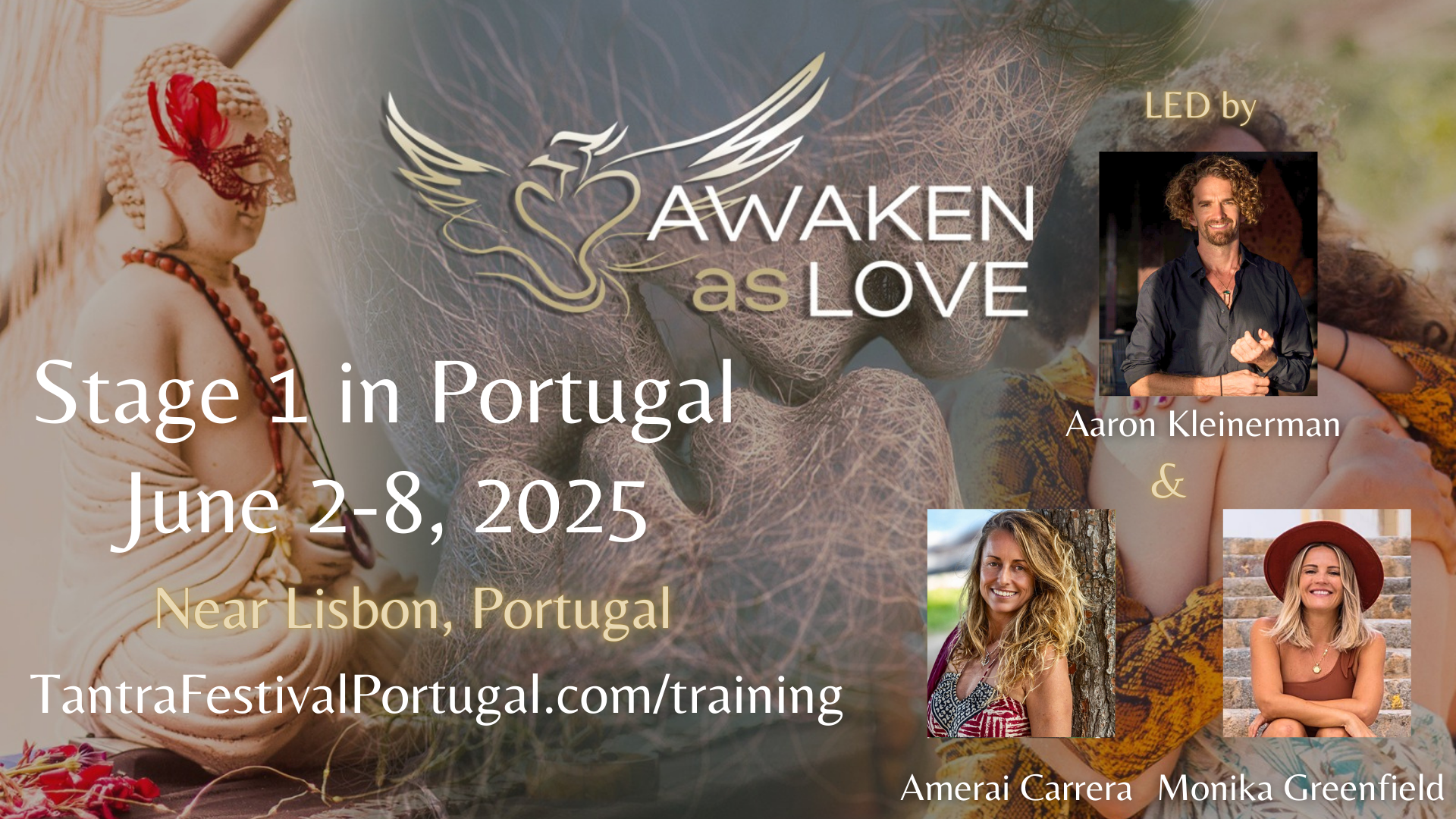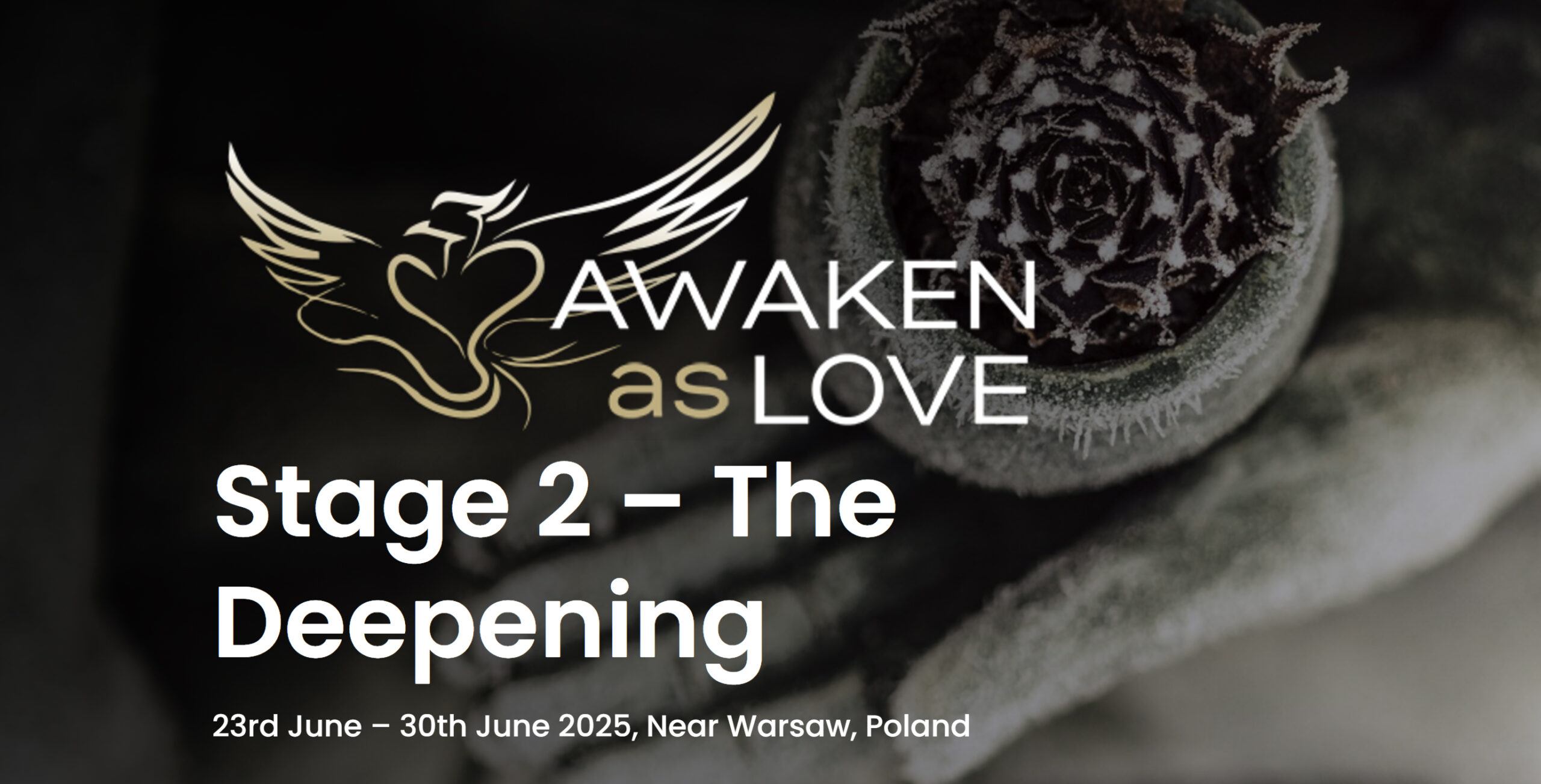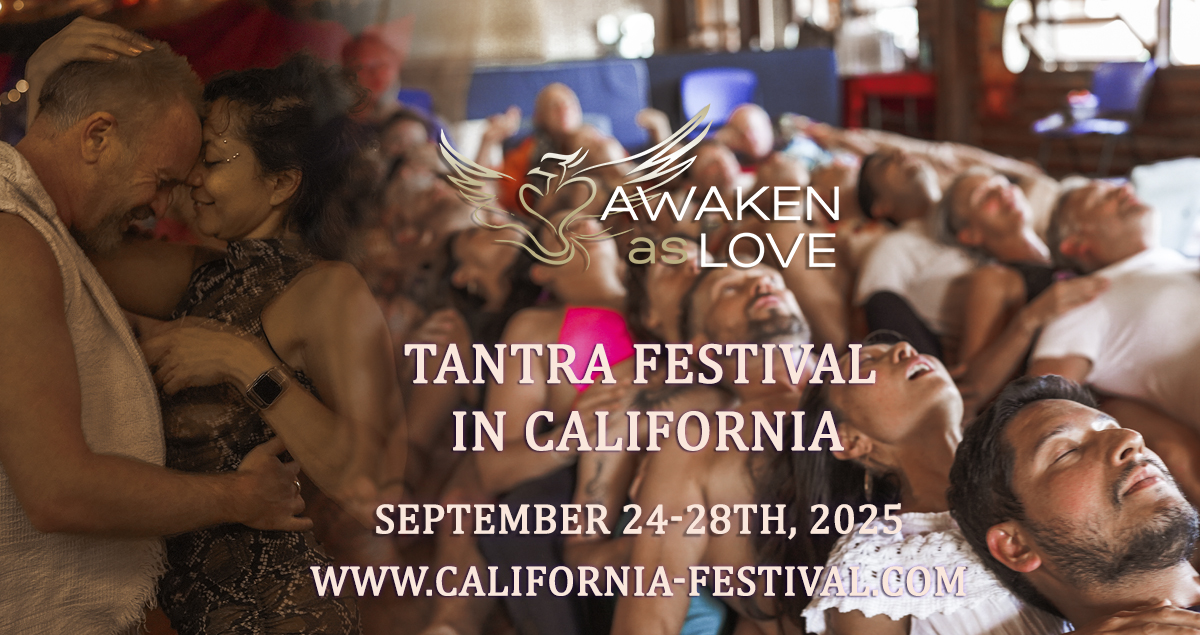
Osho Active Meditations
Relieve yourself of tension and melt into silence
What is an Active Meditation?
Osho Active Meditations are a great way to still the mind by first using some technique to help clear and release tension or focus the mind in some way. Below are some of various techniques created by Osho – the full guided meditations can be bought from the main Osho Website.
The Meditations
The dynamic Meditation lasts one hour and is in five stages. It can be done alone, but the energy will be more powerful if it is done in a group. It is an individual experience so you should remain oblivious of others around you and keep your eyes closed throughout, preferably using a blindfold. It is best to have an empty stomach and wear loose, comfortable clothing.
First Stage: 10 minutes.
Breathe chaotically through the nose, concentrating always on the exhalation. The body will take care of the inhalation. Do this as fast and as hard as you possibly can – and then a little harder, until you literally become the breathing. Use your natural body movements to help you to build up your energy. Feel it building up, but don’t let go during the first stage.
Second Stage: 10 minutes.
Explode! Let go of everything that needs to be thrown out. Go totally mad, scream, shout, cry, jump, shake, dance, sing, laugh, throw yourself around. Hold nothing back, keep your whole body moving. A little acting often helps to get you started. Never allow your mind to interfere with what is happening. Be total.
Third Stage: 10 minutes.
With raised arms, jump up and down shouting the mantra ‘HOO! HOO! HOO!’ as deeply as possible. Each time you land, on the flats of your feet, let the sound hammer deep into the sex centre. Give all you have, exhaust yourself totally.
Fourth Stage: 15 minutes.
Stop! Freeze where you are in whatever position you find yourself. Don’t arrange the body in any way. A Cough, a movement, anything will dissipate the energy flow and the effort will be lost. Be a witness to everything that is happening to you.
Fifth Stage: 15 minutes.
Celebrate and rejoice with music and dance, expressing your gratitude towards the whole. Carry your happiness with you throughout the day.
If your meditation space prevents you from making a noise, you can do this silent alternative: Rather than throwing out the sound, let the catharsis in the second stage take place entirely through bodily movements. In the third stage the sound ‘HOO’ can be hammered silently inside and the fifth stage can become an expressive dance.
Osho Kundalini Meditation lasts for one hour and has four stages, three with music, and the last without. The music has been composed under Osho’s direct guidance specially for this particular meditation. If you would like to try, it is described below. Remember that the last stage is in silence! … and a gong will signal the end of the silent period — promise!
First stage: 15 minutes.
Be loose and let your whole body shake, feeling energies moving up from your feet.
Let go everywhere and become the shaking.
Your eyes may be open or closed.
Second stage: 15 minutes.
Dance . . . any way you feel,
and let the whole body move as it wishes.
Third stage: 15 minutes.
Close your eyes and be still, sitting or
standing . . . witnessing whatever is happening inside and out.
Fourth stage: 15 minutes.
Keep your eyes closed, lie down and be still.
Complete Kundalini Meditation
Begin with shaking, then dancing, and end with stillness and silence, first standing or sitting, then lying. This meditation is usually done in the afternoon to let go of the accumulated stress of the day.
Natraj is dance as a total meditation. There are three stages, lasting a total of 65 minutes.
First Stage: 40 minutes
With eyes closed dance as if possessed. Let your unconscious take over completely. Do not control your movements or be a witness to what is happening. Just be totally in the dance.
Meditation is needed only because you have not chosen to be happy. If you have chosen to be happy there is no need for any meditation. Meditation is medicinal. If you are ill, then the medicine is needed. Buddhas don’t need meditation. Once you have started choosing happiness, once you have
Second Stage: 20 minutes
Keeping your eyes closed, lie down immediately. Be silent and still.
Third Stage: 5 minutes
Dance in celebration and enjoy.
This is an old Tibetan technique of humming, which creates a healing vibration throughout the body, and a hand movement which centers the energy at the navel. Nadabrahma meditation lasts for one hour and has three stages. It can be done at any time of day, alone or with others, but have an empty stomach and remain inactive for at least 15 minutes afterwards.
First stage: 30 minutes
Sit in a relaxed position with eyes closed and lips together humming loudly enough to be heard by others and create a vibration throughout your body. You can visualize a hollow tube or an empty vessel, filled only with the vibrations of the humming. A point will come when the humming continues by itself and you become the listener. There is no special breathing and you can alter the pitch or move your body smoothly and slowly if you feel like it.
Second stage: 15 minutes
The second stage is divided into two 7 1/2 minute sections. For the first half, move the hands, palms up, in an outward circular motion. Starting at the navel, both hands move forwards and then divide to make two large circles mirroring each other left and right. The movements should be so slow that at times there will appear to be no movement at all. Feel that you are giving energy outwards to the universe.
After 71/2 minutes turn the hands, palms down, and start moving them in the opposite direction. Now the hands will come together towards the navel and divide outwards to the sides of the body. Feel that you are taking energy in. As in the first stage, don’t inhibit any soft, slow movements of the rest of your body.
Third stage: 15 minutes
Sit or lie absolutely quiet and still.
This is a powerful method for centering one’s energy in the hara – the area just below the navel. It is based on a Sufi technique of movements for awareness and integration of the body. It is to be done empty stomach and preferably done around mid day. This one-hour meditation has three stages. During the first two stages the eyes are open but not focused on anything. During the third stage the eyes are closed. The music, created especially for this meditation, begins slowly and gradually becomes faster and faster as an uplifting force.
First stage: 30 minutes music.
A continuous dance in a set of six movements. With your eyes open, begin by standing in one place and placing the left hand on the heart and the right hand on the hara. Stand still for a few moments just listening to the music to get centered. When the bell rings, start the sequence as described below. The movements always come from the center, or hara, using the music to keep the correct rhythm. The hips and eyes face the direction of the hand movement. Use graceful movements in a continuous flow. Loud “Shoo” sounds are made from the throat in synchronicity with the sounds from the recording. Repeat this six-movement sequence continuously for 30 minutes.
1) Touch the backs of the hands together pointing downward on the hara. Breathing in through the nose, bring the hands up to the heart and fill them with love. Breathing out make the sound “Shoo” from the throat and send love out to the world. At the same time move the right arm (with fingers extended, palm downward) and right foot straight forward, and move the left hand back down to the hara. Return to the original position with both hands on the hara.
2) Repeat this movement with the left arm and foot. Return to the original position with both hands on the hara.
3) Repeat this movement with the right arm and foot, turning sideways to the right. Return to the original position with both hands on the hara.
4) Repeat this movement with the left arm and foot, turning sideways to the left. Return to the original position with both hands on the hara.
5) Repeat this movement with the right arm and foot, turning directly behind from the right side. Return to the original position with both hands on the hara.
6) Repeat this movement with the left arm and foot, turning directly behind from the left side. Return to the original position with both hands on the hara.
Second stage: 15 minutes music.
Begin by placing the right toe over the left toe. Fold your arms across your chest and embrace yourself. Feel love for yourself. When the music starts bow down to existence for bringing you here for this meditation. When the tempo changes, begin whirling. Turn anticlockwise keeping the eyes open a little, arms stretched out with the right palm turned upward and the left palm facing the ground. Breathe normally and let the whirling take you over. If you feel discomfort from whirling anticlockwise, you can change to clockwise and reverse position of the hands. If a sensation of nausea arises, focusing the eyes on the right hand can be helpful. To end the whirling, slow down and fold the arms over the chest and heart.
Third stage: Silence, 15 minutes.
Lie down on the belly with your eyes closed. Leave your legs open and not crossed to allow all the energy you have gathered to flow through you. Just go inside and allow witnessing to happen.
Osho has said that if breathing is done correctly in the first stage, the carbon dioxide formed in the bloodstream will make the meditator as high as if an Gourisahnkar (Mt. Everest).
First stage: 15 minutes music.
Sit with eyes closed. Inhale deeply through the nose, filling the lungs. Hold the breath for as long as possible then exhale gently through the mouth, keeping the lungs empty for as long as possible. Repeat this cycle.
Second stage: 15 minutes music.
Return to normal breathing and, allowing the gaze to be soft and gentle, look at a candle flame or flashing light. * Keep the body still.
Third stage: 15 minutes music.
With closed eyes, stand up and left the body be loose and receptive. The subtle energies within will be felt to move the body outside your normal control. Allow this (Latihan) to happen. Don’t you do the moving. Let the moving happen.
Fourth stage: 15 minutes silence.
Lie down, silent and still.
*The rhythmic beat of the music in the second stage is seven times the normal hearbeat. If possible, the flashing light should be a synchronized strobe.
This powerful, cathartic technique creates a circle of energy that results in a natural centering.
First stage: 15 minutes music.
With open eyes run on the spot, starting slowly and gradually, getting faster and faster. Bring your knees up as high as possible. Breathe deeply and evenly. Forget the mind and forget the body. Keep going.
Second stage: 15minutes music.
Sit with eyes closed and mouth open and close. Gently rotate your body from the waist, like a reed blowing in the wind. Feel the wind blowing you from your side to side, back and forth, around and around. This will bring your awakened energies to the navel center.
Third stage: 15 minutes music.
Lie on your back, open your eyes and, with the head still, rotate them in a clockwise direction. Sweep them fully around in the sockets as if you are following the second hand of a vast clock, but as fast as possible. It is important that the mouth remains open and the jaw relaxed, with the breath soft and even. This will bring your centered energies to the third eye.
Fourth stage: 15 minutes silence.
Close your eyes and be still.
Sufi whirling is one of the most ancient techniques. It is good not to eat or drink for a few hours before whirling. It is best to have bare feet and loose clothing.
First stage: 45 minutes music.
Keep your eyes open and feel the center point of your body. Lift your arms to shoulder height, with the right hand palm up and the left hand low, palm down. Start turning around your own axis, anticlockwise. Let your body be soft. Start slowly and after 15 minutes gradually go faster and faster. You become a whirlpool of energy – the periphery a storm of movement but the witness at the center silent and still.
Second stage: 15 minutes silence.
Let your body fall to the ground when the music stops. (It may already have happened before.) roll onto your stomach immediately so that your navel is in contact with the earth. Feel your body blending into the earth. Keep your eyes closed and remain passive and silent.
Upcoming Events
These are the next events from Awaken as Love - click on them to open more information in a new window.
Portugal Tantra Festival
28th May 1st June 2025
Stage 1 in Portugal
2nd - 8th June 2025
Stage 2 in Poland
23rd - 30th June 2025
Netherlands Tantra Festival
23rd – 27th July 2025
Stage 1 in the Netherlands
3rd – 10th August 2025
California Tantra Festival
24th – 28th August 2025


© Awaken as Love 2025

Discover Tantra
A deep intimacy with the different aspects of your being
What is Tantra?
Much of the work we do comes under the umbrella of Tantra. These days the word tantra can be (and is) slapped on almost anything to make it sound more sexy, so there is much confusion surrounds what it actually means. Because of this we feel to give a little introduction to it all to help clear up confusion and put some potential fears to rest.
Tantra is a path for people wanting to know themselves, deepen awareness within themselves and celebrate all aspects of life. The word has been used to describe a wide range of practises and traditions but translates as “method” or “technique”. The essence of the path is that it is not so concerned with philosophies about life as the direct experience of it, itself. It gives us methods to directly experience ourselves and actualise our potential. It is not a believer’s world but one of alchemy and a knowing that comes from living.
Key Points
Polarity works
The interplay between the masculine and feminine is actually a good thing and gives the passion to life. By skilfully playing out these poles we can energise our practise with enough juice to transcend duality (our own limited point of view). If the polarity is neutralised then its like living with a dead battery. This is relevant as there are many spiritual systems which have actually encouraged us to dampen down our natural polarity, instincts and desires in order to find peace. It is very peaceful being a corpse! These polarities are sometimes represented by Deity’s such as Shiva and Shakti.
Tantra is inclusive
It uses all at it’s disposal in order for us to deepen into our nature. The key word is acceptance – in accepting yourself, your desires and your quirks there is an opportunity to deepen. Unlike other systems which attempt to shape you through control and effort, Tantra allows you to indulge your desires but with awareness so they deepen beyond surface wants and needs towards the ultimate desire for love and awakening.
No Effort?
Not necessarily, some of the techniques can be quite physical, or involve facing fears and becoming more present. It’s not always easy, but they all point you towards your natural self. Rather than trying to add something to you in order to make you “enlightened”, these methods strip away the false ways of being with which we have imprisoned ourselves. Sometimes this can leave us a little shaky as we are accustomed to the comfort of our beliefs – ultimately, however, they leads to a more deeply satisfying and engage way of living.
Because of the social repression of sex in most culture, the popular view of tantra is it all about sex e.g “I heard sting did it, and it lasted 8 hours…”.
The act of lovemaking in all its facets (quiet breathing and passionate ravishing of the other) is included in tantra but it is certainly not limited to that! In the classic text the Vigayn Birav Tantra there are 112 methods for awakening, and only 6 of these are directly related to the sexual act.
Having said all that, life is deeply sexual. The whole energy of life can be seen as sexual energy, of creativity, as the interplay of consciouness and love, the dance of masculine and feminine energies. When we expand the limited concepts of sexuality to include all of the interplay of life within that, then we can state that tantra is about “awakening through sexuality”.






